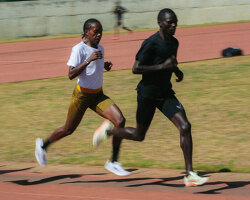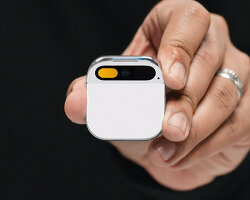KEEP UP WITH OUR DAILY AND WEEKLY NEWSLETTERS
happening now! with sensiterre, florim and matteo thun explore the architectural potential of one of the oldest materials—clay—through a refined and tactile language.
developed by tomasz patan, the mastermind behind Jetson ONE, the personal hoverbike levitates and glides in the air with ease.
connections: +290
explore the series of high-tech toys and devices designed with modern features for adults.
its external body features abstract semi-circles in white and gray over a warm gray base, subtly evoking the ripples and waves of flowing water.
connections: +430
designboom interviews chief design officer gorden wagener to discuss the ‘frunk’, AI agents that detect the driver’s moods, and more.
![[in]brace is a wearable device that uses tongue movement to interact with computers](https://static.designboom.com/wp-content/uploads/2020/07/inbrace-tongue-based-interaction-between-human-and-machine-designboom-600.jpg)
![[in]brace is a wearable device that uses tongue movement to interact with computers designboom](https://static.designboom.com/wp-content/dbsub/402512/2020-07-27/inbrace-a-tongue-computer-interface-1-5f1f0b5ef1380.jpg)
![[in]brace is a wearable device that uses tongue movement to interact with computers designboom](https://static.designboom.com/wp-content/dbsub/402512/2020-07-27/inbrace-a-tongue-computer-interface-2-5f1f0b5ef1488.jpg)
![[in]brace is a wearable device that uses tongue movement to interact with computers designboom](https://static.designboom.com/wp-content/dbsub/402512/2020-07-27/inbrace-a-tongue-computer-interface-3-5f1f0b5ef150c.jpg)
![[in]brace is a wearable device that uses tongue movement to interact with computers designboom](https://static.designboom.com/wp-content/dbsub/402512/2020-07-27/inbrace-a-tongue-computer-interface-4-5f1f0b5ef1580.jpg)
![[in]brace is a wearable device that uses tongue movement to interact with computers designboom](https://static.designboom.com/wp-content/dbsub/402512/2020-07-27/inbrace-a-tongue-computer-interface-5-5f1f0b5ef1609.jpg)
![[in]brace is a wearable device that uses tongue movement to interact with computers designboom](https://static.designboom.com/wp-content/dbsub/402512/2020-07-27/inbrace-a-tongue-computer-interface-6-5f1f0b5ef167e.jpg)
![[in]brace is a wearable device that uses tongue movement to interact with computers designboom](https://static.designboom.com/wp-content/dbsub/402512/2020-07-27/inbrace-a-tongue-computer-interface-7-5f1f0b5ef16ee.jpg)
![[in]brace is a wearable device that uses tongue movement to interact with computers designboom](https://static.designboom.com/wp-content/dbsub/402512/2020-07-27/inbrace-a-tongue-computer-interface-8-5f1f0b5ef176b.jpg)
![[in]brace is a wearable device that uses tongue movement to interact with computers designboom](https://static.designboom.com/wp-content/dbsub/402512/2020-07-27/inbrace-a-tongue-computer-interface-9-5f1f0b5ef17e6.jpg)







